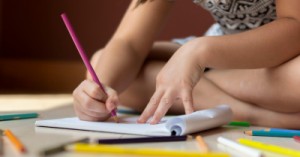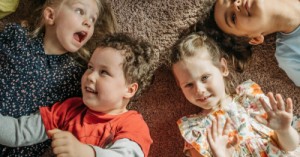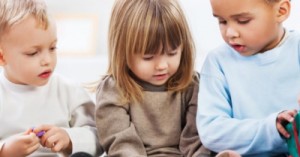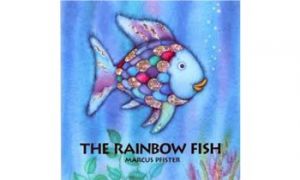Applying theorists in observations involves connecting your observations of children’s behaviors, interactions, and development to established theories of learning and development. This approach not only deepens your understanding of children’s needs but also aligns with the EYLF and the NQS. The following article provides information on Understanding Key Theorists and Their Concepts, Linking Observations to Theories, Incorporating Theories into Planning, Practical Examples and more.
Understanding Key Theorists and Their Concepts
Familiarize yourself with the foundational ideas of key theorists. Here are a few examples:
-
Jean Piaget (Cognitive Development):
Focuses on how children construct knowledge through stages of development. Look for behaviors that reflect exploration, problem-solving, or schema-building. -
Lev Vygotsky (Social Development):
Highlights the importance of social interactions and the Zone of Proximal Development (ZPD). Observe moments where children seek help or guidance from peers or educators. -
Erik Erikson (Psychosocial Development):
Emphasizes stages of emotional and social growth. For infants, this might involve trust-building behaviors; for toddlers, look for signs of autonomy or initiative. -
Maria Montessori (Child-Centered Learning):
Advocates for independence and exploration within a prepared environment. Observe how children engage with materials and make choices. -
Howard Gardner (Multiple Intelligences):
Suggests that children learn in diverse ways (e.g., linguistic, spatial, kinesthetic). Identify strengths or preferences in how children approach activities.
Link Observations to Theories
When documenting observations, explicitly connect what you see to relevant theories. For example:
-
Observation: A toddler repeatedly stacks blocks, knocks them down, and rebuilds.
-
Theoretical Link: This aligns with Piaget’s concept of schema-building, where children experiment to understand cause and effect.
-
-
Observation: A child seeks help from a peer to complete a puzzle.
-
Theoretical Link: This reflects Vygotsky’s ZPD, where learning occurs through social interaction and scaffolding.
-
-
Observation: An infant smiles and reaches for an educator after being comforted.
-
Theoretical Link: This demonstrates Erikson’s stage of trust vs. mistrust, where secure relationships foster emotional development.
-
Incorporate Theories into Planning
Use your theoretical insights to inform your programming and interactions.
-
Scaffolding Activities: Based on Vygotsky’s ZPD, provide just enough support to help children achieve tasks slightly beyond their current abilities.
-
Stage-Appropriate Materials: Inspired by Piaget, offer materials that match children’s developmental stages, such as sensory toys for infants or problem-solving games for toddlers.
-
Emotional Support: Following Erikson, create a nurturing environment where children feel safe to explore and express themselves.
Reflect and Share
-
Team Discussions: Share your observations and theoretical interpretations with colleagues during planning meetings. This fosters a collaborative approach to understanding and supporting children’s development.
-
Family Communication: Explain how your observations and programming are informed by developmental theories. This helps families understand the rationale behind your practices.
-
Documentation Displays: Create visual displays that showcase how your observations connect to theories. For instance, a photo of a child engaging in sensory play could be accompanied by a brief explanation of Piaget’s ideas.
By weaving theoretical perspectives into your observations, you not only enhance your professional practice but also contribute to a richer, more intentional learning environment for children.
Practical Examples
Here are some practical examples of how you can apply theorists' concepts in early childhood observations and programming:
1. Jean Piaget (Cognitive Development Theory)
Observation:
A toddler repeatedly drops a toy from their high chair and watches as an educator picks it up.
Theoretical Link:
This behavior aligns with Piaget’s sensorimotor stage, where children experiment with cause and effect to build schemas.
Implications for Practice:
Provide opportunities for exploration, such as toys that make sounds when pressed or objects that roll when pushed, to encourage further understanding of cause and effect.
2. Lev Vygotsky (Social Development Theory)
Observation:
A child struggles to complete a puzzle but succeeds with guidance from an educator.
Theoretical Link:
This reflects Vygotsky’s Zone of Proximal Development (ZPD), where learning occurs with support from a more knowledgeable other.
Implications for Practice:
Introduce scaffolded activities, such as puzzles or building blocks, where educators provide just enough support to help children achieve success.
3. Erik Erikson (Psychosocial Development Theory)
Observation:
An infant cries and reaches for an educator, who responds with soothing words and a gentle touch.
Theoretical Link:
This demonstrates Erikson’s trust vs. mistrust stage, where consistent caregiving fosters emotional security.
Implications for Practice:
Ensure responsive caregiving by maintaining predictable routines and offering warm, consistent interactions.
4. Maria Montessori (Montessori Method)
Observation:
A child independently chooses a toy from a shelf and begins exploring it without prompting.
Theoretical Link:
This aligns with Montessori’s emphasis on independence and self-directed learning within a prepared environment.
Implications for Practice:
Design an environment with accessible, age-appropriate materials that encourage autonomy and exploration.
5. Howard Gardner (Multiple Intelligences Theory)
Observation:
A child shows a preference for dancing during music time and struggles with verbal storytelling.
Theoretical Link:
This reflects Gardner’s bodily-kinesthetic intelligence, where physical movement is a preferred mode of learning.
Implications for Practice:
Incorporate activities like dance, yoga, or movement-based games to support this child’s learning style.
6. Loris Malaguzzi (Reggio Emilia Approach)
Observation:
A group of children collaboratively builds a tower using blocks, discussing their ideas as they work.
Theoretical Link:
This aligns with Malaguzzi’s emphasis on collaboration and the “hundred languages of children,” where children express themselves through various mediums.
Implications for Practice:
Encourage group projects and provide diverse materials (e.g., blocks, art supplies) to support creative expression and teamwork.
7. John Dewey (Experiential Learning)
Observation:
A child learns about plants by watering them and observing their growth over time.
Theoretical Link:
This reflects Dewey’s principle of learning through experience, where hands-on activities deepen understanding.
Implications for Practice:
Plan real-world, experiential activities like gardening, cooking, or nature walks to foster active learning.
These examples demonstrate how observations can be enriched by linking them to developmental theories. By doing so, you can create intentional programming that supports each child’s unique growth and learning journey.
Further Reading
Child Theorists and Their Theories in Practice
Activities That Link To Educational Theories
Linking Theories To The EYLF
Applying Early Learning Theories
Different Types Of Observation Method
Observations in Childcare







 Here is the list of the EYLF Learning Outcomes that you can use as a guide or reference for your documentation and planning. The EYLF
Here is the list of the EYLF Learning Outcomes that you can use as a guide or reference for your documentation and planning. The EYLF The EYLF is a guide which consists of Principles, Practices and 5 main Learning Outcomes along with each of their sub outcomes, based on identity,
The EYLF is a guide which consists of Principles, Practices and 5 main Learning Outcomes along with each of their sub outcomes, based on identity, This is a guide on How to Write a Learning Story. It provides information on What Is A Learning Story, Writing A Learning Story, Sample
This is a guide on How to Write a Learning Story. It provides information on What Is A Learning Story, Writing A Learning Story, Sample One of the most important types of documentation methods that educators needs to be familiar with are “observations”. Observations are crucial for all early childhood
One of the most important types of documentation methods that educators needs to be familiar with are “observations”. Observations are crucial for all early childhood To support children achieve learning outcomes from the EYLF Framework, the following list gives educators examples of how to promote children's learning in each individual
To support children achieve learning outcomes from the EYLF Framework, the following list gives educators examples of how to promote children's learning in each individual Reflective practice is learning from everyday situations and issues and concerns that arise which form part of our daily routine while working in an early
Reflective practice is learning from everyday situations and issues and concerns that arise which form part of our daily routine while working in an early Within Australia, Programming and Planning is reflected and supported by the Early Years Learning Framework. Educators within early childhood settings, use the EYLF to guide
Within Australia, Programming and Planning is reflected and supported by the Early Years Learning Framework. Educators within early childhood settings, use the EYLF to guide When observing children, it's important that we use a range of different observation methods from running records, learning stories to photographs and work samples. Using
When observing children, it's important that we use a range of different observation methods from running records, learning stories to photographs and work samples. Using This is a guide for educators on what to observe under each sub learning outcome from the EYLF Framework, when a child is engaged in
This is a guide for educators on what to observe under each sub learning outcome from the EYLF Framework, when a child is engaged in The Early Years Learning Framework describes the curriculum as “all the interactions, experiences, activities, routines and events, planned and unplanned, that occur in an environment
The Early Years Learning Framework describes the curriculum as “all the interactions, experiences, activities, routines and events, planned and unplanned, that occur in an environment


